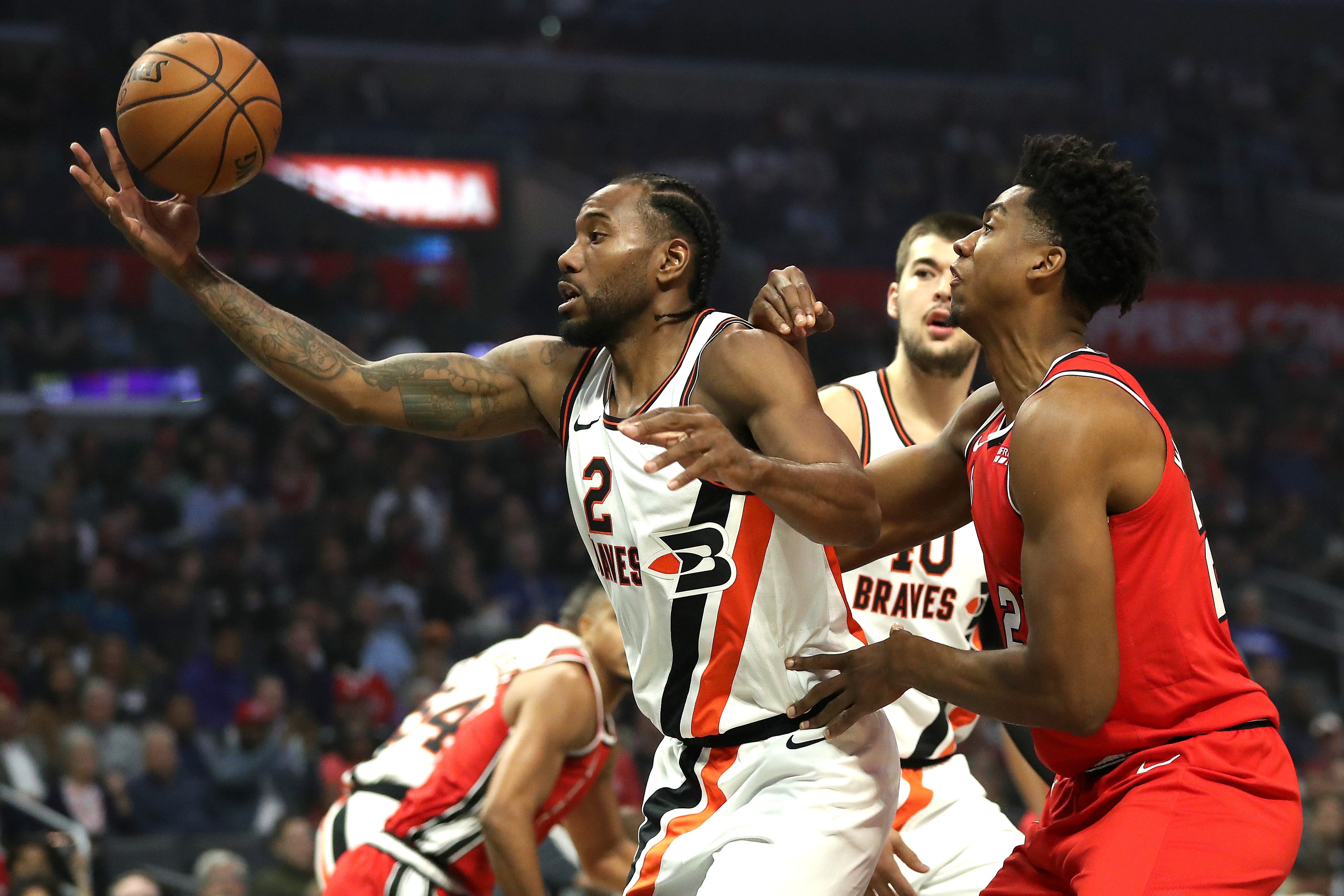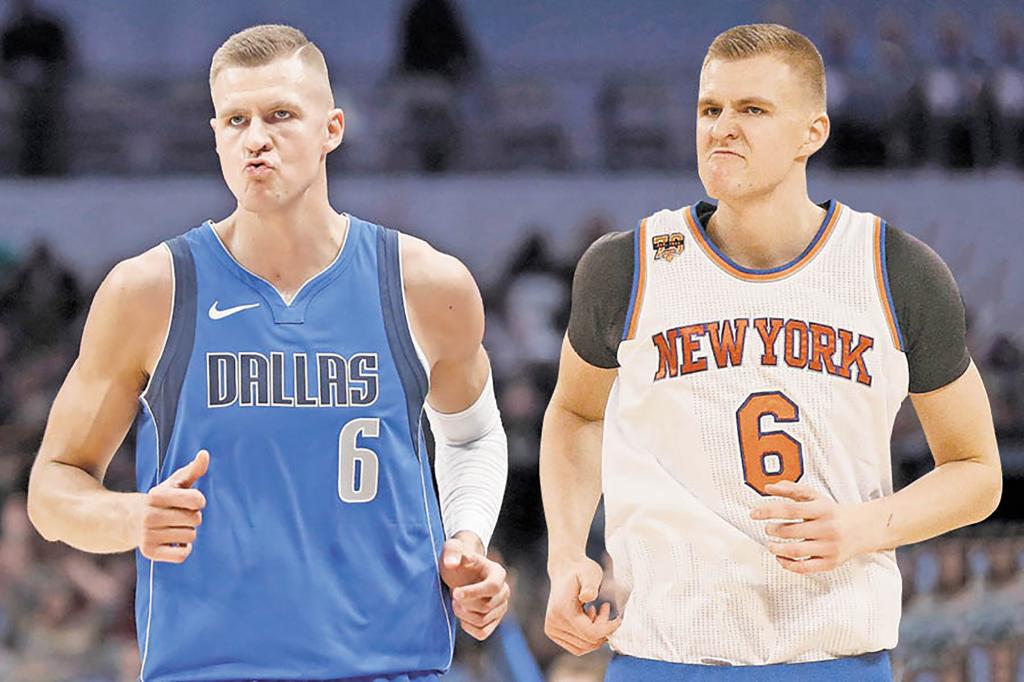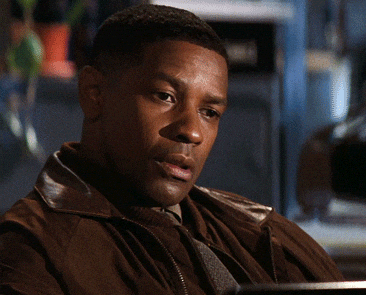- 70,130
- 111,320
- Joined
- Mar 31, 2011
Kawhi and BPG. The two guys that were "too scared" to play for the Lakers.2 cowards?
Follow along with the video below to see how to install our site as a web app on your home screen.

Note: this_feature_currently_requires_accessing_site_using_safari
Kawhi and BPG. The two guys that were "too scared" to play for the Lakers.2 cowards?


Welcome to the dumbest debate in sports.
“Load management” is what teams do so they can assure they get the most from their players in the most high-leverage situations. That doesn’t necessarily just mean the playoffs, that also means maximizing a player’s regular-season impact too. Forward-thinking teams have implemented this strategy over the years, grudgingly, because the evidence from medical and training staffs became overwhelming that it was a better way to manage a basketball team.
Lots of TV shock jocks are rolling their eyes over this, but what they are really saying is that they think they know more about how to maximize player games than the team’s own professionals. Admittedly, one of the fun parts of sports fandom is occasionally thinking we know more than the manager or GM or whoever, but this gets into an area where very few people have any expertise at all. I guarantee the next person you hear pontificating on this issue knows little to nothing about cartilage.
While we’re here: The fact that players didn’t do this in the 1980s and some of them survived is irrelevant. We didn’t require kids to wear safety belts in the 1980s either, and I still survived. You would not use this as evidence to leave your own children unbuckled.
Again: The goal here is to maximize the number of high-quality games the player can play, and in particular the number of high-quality important games.
The issue that the “back in the good old days” crowd is missing is just how much more taxing the modern game is on players’ bodies.
That happens for two reasons: First, they’re in worse shape when they get to us, and second, the NBA is a fundamentally different game than it was 20 years ago.
I haven’t heard either of these points discussed much in the load management debate, so let’s get right to it.
First, the players’ bodies. This the more minor of the two points, but it does matter. Most American-born NBA players played a ton of AAU tournaments starting at a very early age, often with multiple games in a single day. Worse, most of them specialized at a (too) young age in one sport. Even in the seven years I was with the Grizzlies, we saw a marked increase in medical cases at the draft combine – players in their late teens and early 20s who had severe repetitive-use pathologies before they even arrived in the NBA. And those are just the ones who survived to that point.
As a result, even by their mid-20s, virtually all of these guys are dealing with something. The schedule affords few opportunities to truly recover, so at times teams need to invent them.
Second, watch a clip from the 1980s and then watch some of the action today. People write about the NBA being more physical back then, but they’re missing the point – physicality isn’t what is creating the injury risk. The vast majority of basketball health management is knees, ankles, tendons and feet – shoves to the upper body or the occasional punch to the face aren’t impacting these body parts.
What those body parts respond negatively to, however, are accelerations and decelerations – the constant start-up and slow-down that is required to defend multiple DHOs on a single possession…and required of all five players, even the ones on the weak side. That stands in sharp contrast to the iso and post-heavy days of yore, when much less was asked of weak-side defenders in particular and they could essentially chill for a while if their man wasn’t trying to score.
The fact that Michael Jordan used to play 3,000 minutes a year is irrelevant, because a game minute in 1989 is not equal to a game minute in 2019. The pace-and-space era produces a lot more accelerations and decelerations for the 10 players on the court. And thus, relative to a minute of NBA basketball in 1989, a minute of 2019 basketball creates a lot more strain on the body parts most likely to break down over the course of a basketball season.
So, back to Kawhi Leonard.
He has a condition called tendinopathy in his knee, which is basically damage to a tendon that won’t get better. The league considers him an “injured player” in this case and, because of this, the rules on DNP-rest are more lax than they would be for others. We had this situation in Memphis with Chandler Parsons, whom we sat out of every single back to back over the entire 2017-18 season. The league didn’t penalize us for resting him in a national TV game (#wellactually they solved that problem when they made the schedule), or for resting him in a road game, because we had more latitude to determine the best course of action.
Finally, for the “what about fans who bought tickets” crowd:
In 2016, we had a situation in Memphis where we had to rest both Mike Conley and Marc Gasol on the fourth game of the regular season. There was no debate internally about this. The schedule gave us a 4-in-5 the first week of the season, which is absurd (the league has since done away with 4-in-5s entirely), and it was worse in this case because both players were still recuperating from season-ending injuries the previous year. Our medical and training staff assured us that we greatly jeopardized the remaining 76 games by playing them four times in five days so early. (Side note: Playing a full game and then taking a full game off is also deemed by virtually every professional involved as a better alternative than half-assing it by playing 20 minutes each in both).
I’m sure there were people in Minnesota who bought a ticket thinking they’d see Mike and Marc play and they were probably upset. (Not that upset, since they got to see the T’wolves beat our asses by 36, but still). But there were also fans who bought tickets for our final 76 games, and they thought they were seeing Mike and Marc, too. We gave them a much better chance of that happening; indeed, both players finished the season healthy and played 69 and 74 games, respectively, that season – including a few strategic rests in between.

Now they’re just damaged.Warriors did more damage than people imagined.


The Celtics reportedly offered "a trove of assets including Jaylen Brown" to the Knicks for Kristaps Porzingis before the 2017 NBA Draft, but "Phil Jackson didn't make the trade on orders from owner James Dolan."

chuck stays shading guys who got paidChuck had me dead last night when Kenny asked what Whiteside’s strength were and he said “going to the bank twice a month stealing money” loool
Entire league was having sleepless nights because of the beige wunderkind from Davidson
sheeshThe reviews were mixed on which Warrior, Curry or Green, had inspired more desire for revenge with their animated celebrations.
"Dray, because he's not as good," the Pacific Division rival says.

You know the season went down in flames quick when Frank NT is now back in the good graces of Knick fans.
really good when players come back to 100% health and play in gamesWhite Power Gordon been hooping. Can’t eem front.
WOWWWWWWW THAT'S CRAZZZZZYYYYY
 . But go ahead. Y’all cook. That Michael Eric Dyson article (I know...I keep using it, but it’s relevant....was during the midst of Steph 2016 season)
. But go ahead. Y’all cook. That Michael Eric Dyson article (I know...I keep using it, but it’s relevant....was during the midst of Steph 2016 season)IT on Celtics >>>> Kyrie or Kemba on Celtics
On the B

Steph got players and execs making anonymous statements and losing their minds over a mouth guard. Different

Kawhi’s 4th quarters have been something special. If only he could start games with the same efficiency